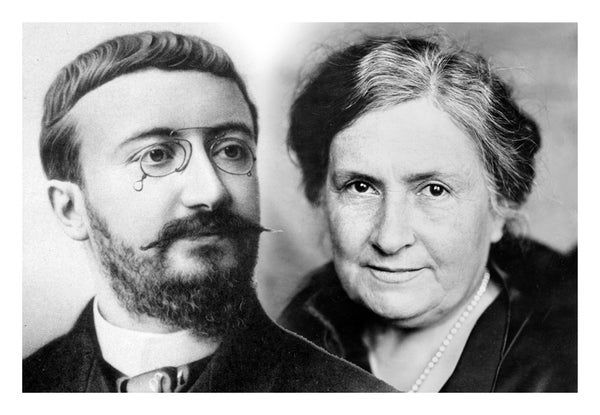This article was published in Scientific American’s former blog network and reflects the views of the author, not necessarily those of Scientific American
In France in the 1860s, a teenage boy took the exam required for receiving his high school diploma. On one question, instead of providing the name of a Greek philosopher, he mistakenly offered the name of a character in a book he’d read. When his teacher heard his response, she was outraged. She told him he would never have what she called a “philosophical mind.” The word “never” stuck with him.
Decades later, when compulsory schooling had spread through most of France, the country turned its focus to the quality of education. Some students made slower progress than others. When students fell three grade levels behind, they were labeled “retarded.” Teachers did not know what to do with them. So they turned for help to the same teenager who once was told he would never have a philosophical mind. His name was Alfred Binet.
Binet is famous for inventing the IQ test. But why he created it and what he did with it is not well known. The why and the what are quite different from how we use his test today.
On supporting science journalism
If you're enjoying this article, consider supporting our award-winning journalism by subscribing. By purchasing a subscription you are helping to ensure the future of impactful stories about the discoveries and ideas shaping our world today.
At the time, teachers wanted struggling students out of their classrooms. Binet, however, viewed intelligence as a skill developed and nurtured over time. He saw an opportunity to put his beliefs to the test, so he volunteered to take these “retarded” children and have them in a class of his own. Binet wanted to teach the unteachable.
Binet knew he could not persuade others of the development of intelligence through anecdotal evidence. He needed to measure intelligence and show the progress that was possible. This was the why for the IQ test: to show intelligence could be increased. Binet’s idea was quite progressive, so he wrote a book called Modern Ideas About Children to describe his experiences and the results.
In one year, Binet’s students progressed from three years behind to only two. Such progress was remarkable. At their previous rate of learning, they should have fallen further behind. If these children learned at the same pace as “normal” children, they should have remained three years back. The only way they could now be two years behind is if they were learning much faster than “normal” children.
Binet had school principals check the children’s progress, and the verified results astonished the French public. Congressmen asked to visit Binet’s classes, which had now become a school. They were surprised to see these children doing physical and intellectual exercises requiring much skill. The congressmen asked to try out these “mental orthopedics” themselves. When they realized they could not perform at the same level as children who were supposed to be intellectually inferior, the congressmen burst out laughing. They could not believe it. But Binet was not surprised. He wrote about the “educability of intelligence” and how he helped these children “literally to become more intelligent.” It was not anecdote. This was the what for the IQ test. Binet now had a measurement to prove intelligence was developed.
Meanwhile, in Italy, a woman overcame a number of obstacles to become the first female granted a medical degree in the country. As an assistant doctor in a psychiatric clinic, she became particularly concerned about those of her patients who were children. These children were so behind in school that society deemed them insane. She realized there had been a terrible misdiagnosis. “I, however, differed from my colleagues,” she once wrote, “in that I felt that mental deficiency presented chiefly a pedagogical, rather than mainly a medical, problem.” After working so hard to become the first female doctor in Italy’s history, she essentially quit to become a teacher. Her name was Maria Montessori, and she wanted to teach the unteachable.
When Montessori began to educate these children, they were shy and scared and hardly spoke a word. Two years later, Montessori’s students took the public examination for primary certificates. All of her six-year-olds taking the exam passed both the reading and writing sections. Some eight-year-olds from the “normal” schools failed. Montessori helped these children who were once literally in an insane asylum outperform “normal” children in Rome.
Binet and Montessori did not work together or know each other, but they had striking similarities. They both held a deep belief that intelligence was a developed talent. Both of them emphasized learning by doing. They also shared a willingness to get their hands dirty by teaching the unteachable. And the results were extraordinary. Soon, people in France and Italy wanted them teaching “normal” children as well.
Over 100 years later, we have all but forgotten what Binet and Montessori did to develop children’s intelligence. We are more interested in using the IQ test to defend our failing of children. We conclude that intelligence is inherited because of studies on twins. And we vigorously search our 24,000 genes to find the combination that causes intelligence.
It raises the question: Who is willing to get their hands dirty today?
